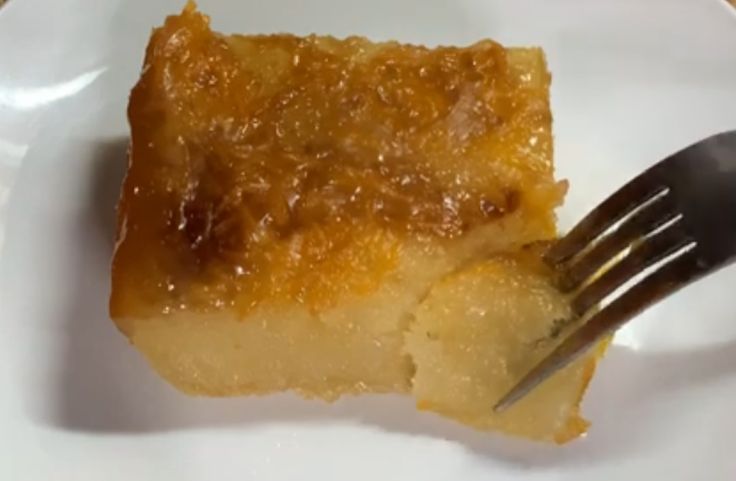Cassava pie is a chewy, gluten-free dish with sweet or savory twists. Find regional recipes, tasty variations, and step-by-step tips to make it right at home.
My cassava pie experience is a surprising one for someone who has been doing cassava all his life.
In my cassava farming region, we thought we had exhausted all that could be done with the cassava root tuber until I encountered cassava pie.
Cassava pie has found its place in kitchens across the globe, especially in regions where cassava is a dietary staple.
With its ability to shift between sweet and savory, this dish captures the heart of traditional cooking while fitting neatly into modern dietary needs, particularly for those avoiding gluten.
Its role in various cultures is more than culinary; it reflects history, resourcefulness, and local flavor.
In Caribbean households, it’s baked with coconut and spices during holidays.
Across parts of Africa and South America, it leans into meat-filled, savory versions.
This blend of nostalgia and versatility makes cassava pie both comforting and creative.
As whole-food cooking and gluten-free lifestyles gain traction, cassava pie is stepping into the spotlight once again, adapted by today’s cooks, but still rooted in cultural tradition.
Recommended: Creative cassava recipes with few ingredients
Table of Contents
- What is Cassava Pie?
- A Short History of Cassava Pie
- Cassava Pie Ingredients
- Cassava Pie Recipe: Classic Style You Can Make at Home
- Cassava Pie Crust: What You Should Know
- Regional Twists: From Bermuda to the Philippines
- Serving and Pairing Suggestions for Cassava Pie
- Tips for Perfecting Your Cassava Pie
- Frequently Asked Questions
- Conclusion
What is Cassava Pie?
Cassava pie is a baked dish made from grated cassava root, often combined with coconut, eggs, butter, sugar, and sometimes sweetened condensed milk.
Popular in Caribbean and Southeast Asian kitchens, this pie stands out for its chewy texture and rich flavor.
Some versions are sweet and custard-like, while others include savory layers with meat or spices.
Whether served warm or at room temperature, this pie made from cassava root is a comforting dish that reflects local traditions and family recipes.
Related: Comparing Yuca Fries and French Fries
A Short History of Cassava Pie
You might be surprised how far cassava pie has traveled. Its story begins with cassava itself, a hardy root that first grew in the hands of Indigenous South American farmers.
As trade routes expanded and colonial histories unfolded, cassava reached new shores, finding a place in the kitchens of Africa, the Caribbean, and Southeast Asia.
In Bermuda, cassava pie became more than just a meal.
African traditions and British influences came together on the island, shaping a version of the pie that’s now baked during holidays and family gatherings.
You’ll find it layered with meat or spiced with raisins and cinnamon. It’s rich, but not just in taste; it carries history on every plate.
Travel to the Philippines, and you’ll meet cassava cake, their sweet take on pies made from cassava root.
Made with coconut milk, sugar, and grated cassava, it’s a celebration favorite.
Sometimes it’s steamed, sometimes baked, always finished with a golden top that signals dessert is ready.
These recipes may look different, but they carry the same roots. Cassava pie tells a story through flavor: migration, tradition, family, and survival.
And now, when you make it, you’re part of that story too.
Related Posts
Cassava Root Recipes for Weight Loss
How to Make Boba Pearls Without Tapioca Starch
Fried Cassava Chips and How to Make Them
How to Make Vegan Cassava Pancake
Cassava Pie Ingredients

Before you get to the oven, you need the right ingredients. Whether you’re aiming for a sweet treat or a savory bake, each version of cassava pie starts with the same root: cassava.
Cassava: The Base of the Pie

You start with cassava, also called yuca. Peel it, boil it, and grate it until smooth.
This root holds everything together, giving the pie its body and chew.
It’s dense, starchy, and neutral in taste, making it easy to build flavor around.
Some recipes skip boiling and use raw grated cassava, especially in baked sweet pies.
Either way, this ingredient is where the pie begins.
Butter and Sugar: Sweet Pie Staples
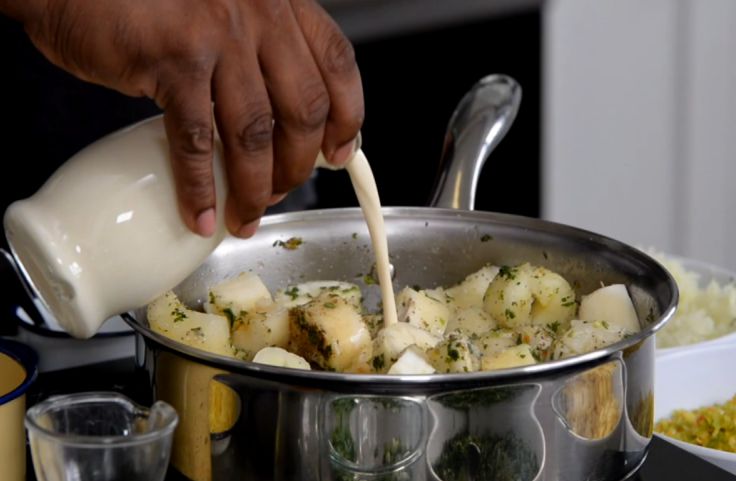
If you’re going sweet, butter and sugar are your base flavors. Butter makes the cassava rich and smooth.
Sugar balances the earthiness with a gentle sweetness.
Add eggs to bind everything and create a soft, almost custard-like texture.
This trio sets the tone for traditional sweet cassava pies, especially in desserts made in the Caribbean or Filipino-style cassava cakes.
Coconut Milk: Creamy and Tropical
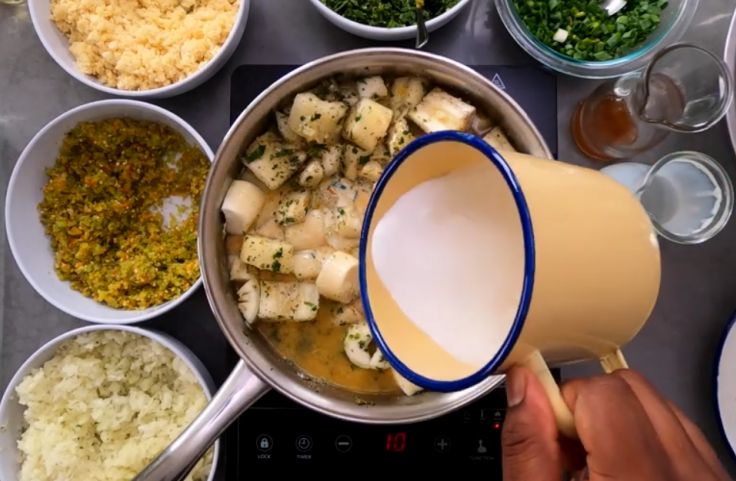
Coconut milk changes everything. It adds moisture, flavor, and a subtle creaminess you can’t miss.
When baked into the cassava, it brings depth to sweet pies. In Filipino recipes, it’s almost a must.
It works best when combined with sugar, eggs, and vanilla. The final pie comes out golden on top and soft in the center.
Spices and Extracts: Flavor Builders
You can lift the flavor with just a few extras. Cinnamon, nutmeg, or vanilla extract adds warm, familiar notes to sweet pies.
For savory versions, use garlic, black pepper, thyme, or local herbs.
These small touches don’t take over the dish; they just fill in the background and bring balance.
Start with small amounts and adjust to taste.
Cheese and Meat: The Savory Fillers
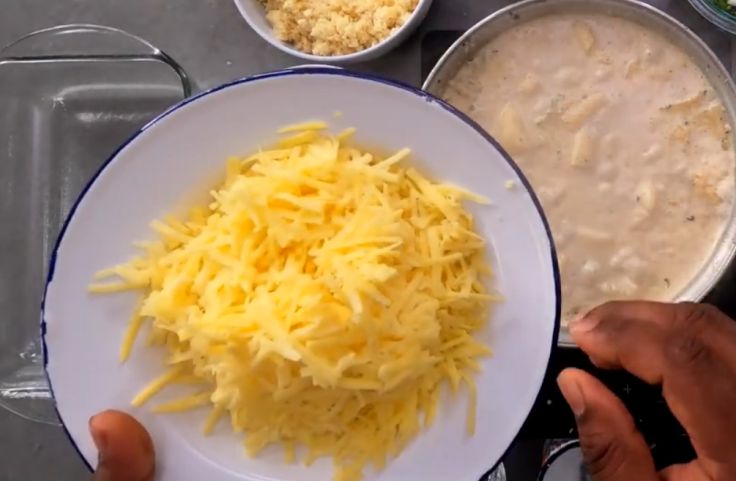
Savory cassava pies are hearty. Grated cheese gives saltiness and body. Ground meat, like beef or chicken, adds bite and flavor.
Some people sauté the meat with onions and spices before mixing it into the cassava.
This way, each slice of pie becomes a full meal. Use firm cheese for structure or soft cheese for melt and moisture.
Vegetables and Add-ins: Color and Crunch
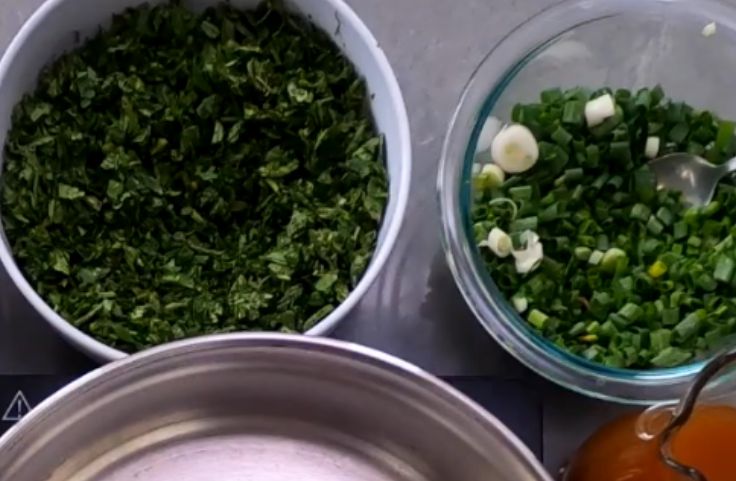
You can add color with bell peppers or green onions. Some like chopped carrots or peas, too.
These extras bring texture and break up the density of cassava. They also look good in the finished pie.
Don’t overdo it. Just enough to add contrast. If you’re following a traditional recipe, feel free to add your touch.
Related: Step-by-Step Guide for Making Baked Yuca Fries
Cassava Pie Recipe: Classic Style You Can Make at Home
Cassava pie brings deep flavor and hearty texture to your table. It’s naturally gluten-free, rich in tradition, and easy to make once you get the basics right.
With the right tools and steps, you’ll bake a pie that’s firm, creamy, and full of comfort.
What You’ll Need: Ingredients and Equipment
Ingredients
• 2 cups grated fresh cassava (or thawed frozen cassava if fresh isn’t available)
• 1 cup grated coconut
• 1 can sweetened condensed milk (14 oz)
• ½ cup granulated sugar
• 4 large eggs
• ½ cup unsalted butter (melted and slightly cooled)
• 1 teaspoon vanilla extract
Equipment
• Mixing bowls (one large, one medium)
• Whisk or hand mixer
• Rubber spatula or wooden spoon
• Measuring cups and spoons
• 9-inch pie dish
• Grater (if working with fresh cassava or coconut)
• Oven preheated to 350°F or 175°C
• A cooling rack or a clean surface for resting the pie
Mix the Cassava Base
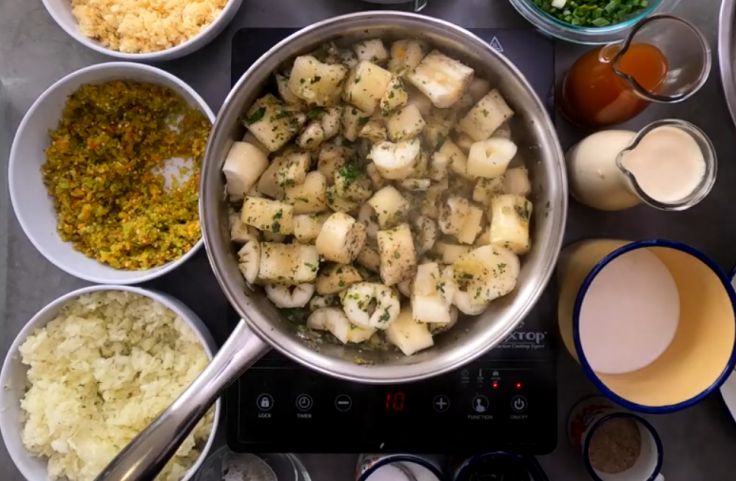
Start by combining the grated cassava and coconut in a large mixing bowl.
This base gives your pie a chewy body and subtle texture.
If the cassava seems too wet, squeeze out extra moisture using a cheesecloth or clean towel.
A drier base holds together better and bakes evenly.
Make the Wet Mix Separately
In a separate medium bowl, whisk together the sugar, sweetened condensed milk, eggs, melted butter, and vanilla extract.
You want this mixture to look smooth and pale.
Mixing the wet ingredients first helps break up the eggs properly and distribute the sweetness across the entire pie.
Combine and Mix Evenly
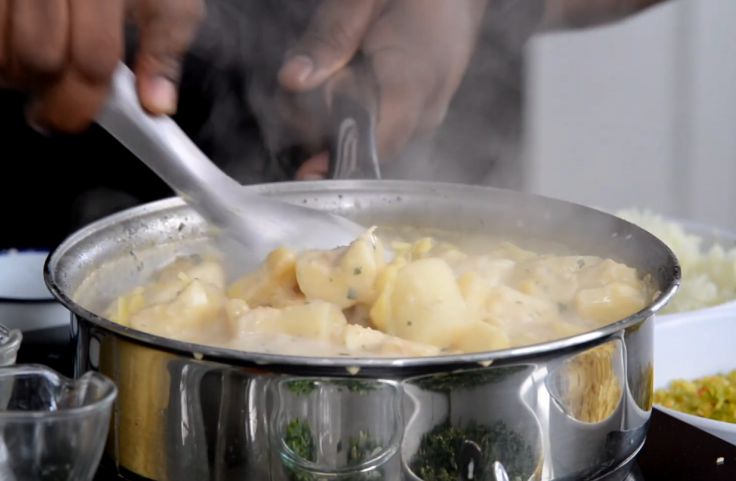
Slowly pour the wet mix into your cassava and coconut base. Use a spatula or wooden spoon to stir until everything is well-blended.
Don’t leave dry patches at the bottom of the bowl, stir from the sides, and fold gently until it looks uniform.
This ensures even baking and taste.
Pour and Smooth the Top

Grease your 9-inch pie dish with butter or oil. Spoon the mixture into the dish and spread it evenly using your spatula.
Smooth out the surface to prevent high spots that may brown too quickly.
A level top bakes more uniformly and gives a better finish when sliced.
Bake Until Golden
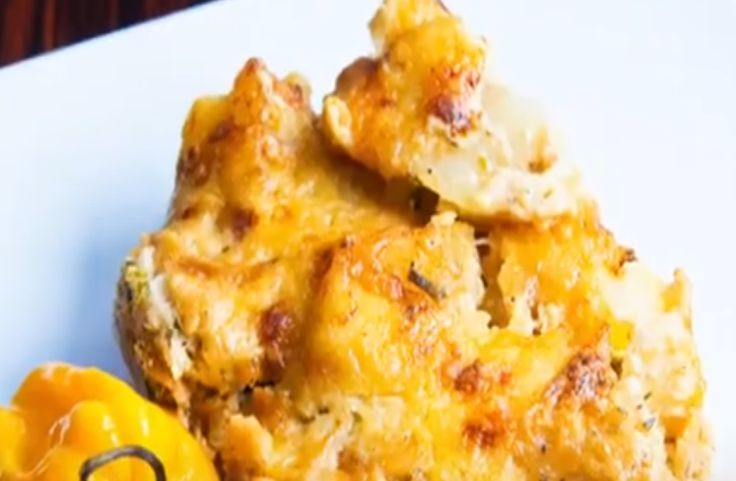
Place your pie in the preheated oven. Bake for 45 to 50 minutes.
Check for doneness by inserting a toothpick into the center; it should come out clean.
If the top starts to brown too fast, cover it loosely with foil in the final 10 minutes. The outer crust should be golden and firm.
Let It Cool Before Serving
Remove the pie from the oven and let it rest on a cooling rack or flat surface for at least 15 to 20 minutes.
This gives the filling time to set and makes slicing easier. Serve it warm or at room temperature.
For a treat, add whipped cream or vanilla ice cream on the side.
How to Store and Reheat Leftovers
Place leftover slices in an airtight container and store them in the fridge for up to three days.
Reheat in the microwave for about 30 seconds per slice, or warm the entire pie in the oven at 300°F until heated through.
Avoid overheating so the pie doesn’t dry out.
Related: Easy Cassava Flour Waffles
Cassava Pie Crust: What You Should Know
Cassava pie crust gives you a chewy, gluten-free base that works for sweet or savory pies.
Grated cassava creates a rustic crust with more texture, while mashed cassava results in a smoother, easier-to-shape layer.
Both methods need a binding agent like eggs or coconut oil.
One key step is removing moisture; too much water makes the crust soggy.
Squeeze grated cassava well or let mashed cassava cool before mixing.
Adding a pinch of salt helps balance flavor, especially when using sweet or rich fillings. To keep the crust from falling apart, pre-bake it for five to ten minutes.
This short step sets the shape and keeps everything firm when it’s time to slice and serve. See more on how to make the cassava pie crust.
Related: Cassava Tortillas without Cassava Flour
Regional Twists: From Bermuda to the Philippines
Cassava pie brings different stories to the table depending on where you are.
From Bermuda’s holiday feasts to everyday snacks in the Philippines, this dish adapts to local taste and tradition.
Bermudian Style: Sweet Meets Savory
In Bermuda, pies made from cassava roots is a Christmas staple. You’ll notice it’s not just sweet.
It’s layered with coconut, spices, and sometimes even bits of chicken or salted cod.
The mix of meat and cassava might surprise you, but it works.
Families prepare it together, and it usually sits beside baked ham or roast turkey.
The texture is dense and satisfying, with flavors that speak of family gatherings and holiday memories.
See a dedicated post for the Bermudian cassava pie recipe.
Filipino Cassava Pie: Creamy and Comforting
In the Philippines, cassava pie takes a more dessert-like form. Locals call it cassava cake, and it’s smooth, creamy, and sweet.
Coconut milk gives it a soft texture, and it’s common to find grated cheese or toasted coconut on top.
You’ll often see it served at birthdays, baptisms, or simple merienda (snack) time.
Its simple ingredients and rich taste make it a favorite across generations. See more on Filipino cassava pie here.
Vietnamese Cassava Pie: Light and Sticky with Coconut
In Vietnam, cassava pie has a chewy, sticky feel. Known locally as bánh khoai mì, it’s made with grated cassava, coconut milk, sugar, and sometimes pandan flavoring.
Unlike the others, it’s steamed or baked until slightly crisp on the outside and sticky inside.
You don’t usually add eggs or butter. It’s enjoyed as a street snack or dessert and often wrapped in banana leaves when sold fresh. More on Vietnamese cassava pie here.
Trinidad Cassava Pie Recipe: Comfort Food with Caribbean Spice
In Trinidad, pies made from cassava roots lean toward savory comfort. You mix boiled and mashed cassava with spices, butter, and eggs to create a firm base.
Minced beef, chopped onions, and peppers go into the filling. Some even use saltfish.
Once baked, the pie holds its shape well and delivers a bold, savory flavor with a spicy kick.
It’s commonly served at Sunday lunch or festive gatherings. See a dedicated post on Trinidad cassava pie.
Fiji Cassava Pie Recipe: Tropical Simplicity
In Fiji, pie made from cassava is often steamed or baked with simple ingredients like grated cassava, sugar, coconut cream, and sometimes mashed bananas.
You won’t find too many spices or layers here.
Instead, the pie is mildly sweet, sticky, and sometimes topped with a golden coconut crust.
It’s a common dessert or tea-time treat and highlights how cassava blends with tropical island cooking. Want to make Fiji cassava pie? See the in-depth guide here.
One Dish, Many Stories
No matter the region, cassava pie reflects the people who make it. In one country, it’s a main holiday dish.
In another, it’s a dessert passed around with tea. You can try one version or try them all.
What matters is how a simple root like cassava keeps bringing flavor, comfort, and tradition to the table.
Serving and Pairing Suggestions for Cassava Pie
Once your pie is out of the oven, what you serve it with can make a big difference.
The right side dish or drink can balance the pie’s richness and round out the meal.
Pair It with a Bright Green Salad
Serve your cassava pie with a crisp green salad. Use arugula, cherry tomatoes, and avocado for color and texture.
A simple citrus vinaigrette cuts through the pie’s dense bite, keeping things fresh.
This contrast works well if you’re serving the pie as a main dish or at a brunch table.
The lightness of the greens gives your meal a clean, balanced feel.
Roasted Vegetables Add Warmth and Color
If you want something more filling, roast vegetables like carrots, bell peppers, or zucchini.
Toss them with olive oil, garlic, and herbs before baking. Their earthy flavor works nicely with the soft, chewy texture of cassava pie.
Roasting brings out natural sweetness that complements both sweet and savory pie versions.
Plus, it looks great on the plate and boosts the meal’s nutrition.
Drinks That Go Well with Cassava Pie
For drinks, go with something cold and light. A glass of Sauvignon Blanc or a mild Chardonnay works if you’re serving wine.
These wines offer a clean finish that balances out the creamy cassava filling.
If you’re avoiding alcohol, try iced tea with lemon or a fruit-filled lemonade.
These help reset the palate between bites and add a refreshing touch.
Add a Sweet Finish with Dessert Toppings
Cassava pie already carries rich flavor, but a scoop of vanilla ice cream or a spoonful of whipped cream adds a cool, soft contrast.
This works especially well with the Filipino-style or sweet versions of cassava pie.
It also turns your slice into a dessert everyone will remember.
You don’t need much, just enough to soften each bite and end the meal on a sweet note.
Tips for Perfecting Your Cassava Pie
Getting cassava pie just right takes more than a recipe. A few smart steps can help you bake a pie with the best flavor and texture every time, without second-guessing anything.
Pick Good Cassava Roots
Start with fresh cassava if you can. The roots should feel firm and look clean without brown spots or soft areas.
If you’re using frozen cassava, thaw it fully and press out extra moisture. Too much water makes the pie soggy.
Dry cassava gives you a firmer base and better structure once baked.
Mash Until Smooth
After peeling and boiling your cassava, mash it while it’s still warm. Work out every lump to keep the texture soft and even.
Let the mashed cassava cool before adding your other ingredients.
This keeps eggs from scrambling and helps the mix hold together better.
A smooth base gives you a smoother pie.
Find Your Flavor Balance
Cassava pie can be sweet or savory, depending on how you season it. A touch of cinnamon or nutmeg adds warmth.
If you like it sweet, add more sugar or a bit of sweetened condensed milk. Prefer it mild?
A pinch of salt helps tone things down and round out the taste without overpowering it.
Bake with Care
Preheat your oven to the right temperature before you start. An oven that’s too hot or too cold can ruin the top or leave the middle raw.
Bake until the top is golden, then check with a toothpick. If it comes out clean, your pie is done.
Let it cool before cutting. This step helps the pie firm up and keeps the slices neat.
Frequently Asked Questions
What is cassava pie made of?
Cassava pie is made from grated cassava, coconut milk, eggs, sugar, butter, and spices, sometimes with cheese or meat for savory versions.
Is cassava pie gluten-free?
Yes, it is naturally gluten-free. The cassava root contains no gluten, making it suitable for people with gluten intolerance or celiac disease.
How do I store cassava pie leftovers?
Store leftover pies in an airtight container in the refrigerator for up to three days. Reheat gently to preserve texture and moisture.
Can I freeze cassava pie?
Yes, it freezes well. Wrap it tightly in foil or plastic wrap, then freeze. Thaw overnight in the fridge before reheating.
Conclusion
Cassava pie isn’t just a dish; it’s a story told through flavor, culture, and generations.
From its Indigenous South American roots to Caribbean holiday tables and Southeast Asian dessert platters, this pie has traveled and transformed while holding its essence.
Whether sweet or savory, every slice carries history, comfort, and creativity.
Its chewy texture, gluten-free nature, and adaptability make it a standout for modern cooks seeking meaningful, satisfying meals.
With countless regional variations and simple ingredients, cassava pie invites you to personalize it while honoring tradition.
Make it for a celebration or a cozy night in, you’re not just baking, you’re preserving a legacy and sharing a piece of global heritage.
References

Chimeremeze Emeh is a writer and researcher passionate about Africa’s most transformative root crop—cassava. Through his work at cassavavaluechain.com, he explores the entire cassava industry, from cultivation and processing to its diverse applications in food, health, and industrial use.
He also writes for palmoilpalm.com, where he shares his extensive experience and deep-rooted knowledge of palm oil, covering red palm oil, palm kernel oil, and refined products. His work there reflects his lifelong connection to agriculture and his commitment to promoting sustainable value chains in Africa.
Driven by curiosity and purpose, Chimeremeze aims to shed light on how cassava continues to empower communities, strengthen food systems, and link traditional farming wisdom with modern innovation.

